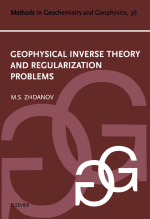Добрый день, Коллеги. Важное сообщение, просьба принять участие. Музей Ферсмана ищет помощь для реставрационных работ в помещении. Подробности по ссылке
Geophysical inverse theory and regularization problems / Геофизическая обратная теория и задачи регуляризации
Inverse solutions are key problems in many natural sciences. They form the basis of our understanding of the world surrounding us. Whenever we try to learn something about physical laws, the internal structure of the earth or the nature of the Universe, we collect data and try to extract the required information from these data. This is the actual solution of the inverse problem. In fact the observed data are predetermined by physical laws, and by the structure of the earth or Universe. The method of predicting observed data for given sources within given media is usually referred to as the forward problem solution. The method of reconstructing the sources of some physical, geophysical, or other phenomenon, as well as the parameters of the corresponding media, from the observed data is referred to as the inverse problem solution.
In geophysics, the observed data are usually physical fields generated by natural or artificial sources and propagated through the earth. Geophysicists try to use these data to reconstruct the internal structure of the earth. This is a typical inverse problem solution.
Inversion of geophysical data is complicated by the fact that geophysical data are invariably contaminated by noise and are acquired at a limited number of observation points. Moreover, mathematical models are usually complicated, and yet at the same time are also simplifications of the true geophysical phenomena. As a result, the solutions are ambiguous and error-prone. The principal questions arising in geophysical inverse problems are about the existence, uniqueness, and stability of the solution. Methods of solution can be based on linearized and nonlinear inversion techniques and include different approaches, such as least-squares, gradient-type methods (including steepest-descent and conjugate-gradient) and others. <...>




